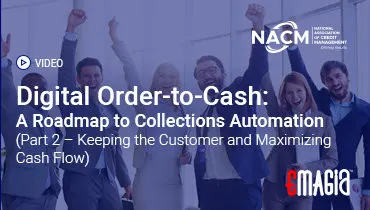In an increasingly digital financial landscape, where transactions often occur with the tap of a screen or the click of a mouse, it might seem that the humble paper check has faded into obsolescence. Yet, despite the rise of electronic payments, the threat of check fraud remains a persistent and costly challenge for individuals, businesses, and financial institutions worldwide. This enduring vulnerability stems from the very nature of checks: physical documents that carry sensitive banking information, making them prime targets for sophisticated fraudsters who constantly adapt their methods to exploit weaknesses in payment systems.
The consequences of falling victim to fraudulent check schemes can be devastating, ranging from significant financial losses and reputational damage to severe operational disruptions and the emotional toll of identity theft. Whether it’s a meticulously crafted counterfeit check, a cleverly altered legitimate payment, or an elaborate scam involving remote deposit capture, the ingenuity of those perpetrating these crimes continues to evolve, making vigilance and robust protective measures more critical than ever. Many individuals and businesses underestimate the risks associated with checks, often operating under the false assumption that banks will always cover losses, leading to a dangerous complacency.
This comprehensive guide will delve deep into the pervasive world of check fraud. We will unravel what this insidious crime entails, explore its historical evolution, and dissect the most common types of fraudulent schemes currently in circulation. Crucially, we will expose the methods employed by fraudsters to obtain sensitive information and perpetrate their deceptions, and illuminate the profound impact these crimes have on their victims. Most importantly, we will equip you with a robust arsenal of prevention strategies, offering practical advice for individuals and businesses to safeguard their finances and maintain peace of mind. Join us as we demystify the complexities of this financial threat, empowering you to protect your assets and navigate the payment landscape with heightened security.
Understanding Check Fraud: Definition and Persistence of a Threat
To effectively combat this pervasive financial crime, it’s essential to first establish a clear understanding of what check fraud is, how it fundamentally works, and why it continues to plague the financial system despite technological advancements.
Check Fraud Definition: What Constitutes This Financial Crime?
At its core, check fraud definition refers to the illegal act of altering, forging, or creating a check with the intent to deceive and unlawfully obtain money or property. It involves manipulating a check (either a physical paper check or its digital representation) to make it appear legitimate, thereby tricking a bank or an individual into honoring it. The key element in any instance of this fraud is the deliberate intent to defraud. It is not merely a mistake in writing a check; it’s a calculated act of deception designed to illicitly gain funds. This crime undermines the integrity of financial transactions and can have far-reaching consequences for all parties involved.
How Check Fraud Works: The Basic Mechanics of Deception.
The basic mechanics of this type of fraud involve a fraudster manipulating a check or the check-processing system to divert funds. This typically follows a few common patterns. A fraudster might create a completely fake check, known as a counterfeit check, using readily available technology like scanners and printers, often mimicking a legitimate company’s or individual’s check. Alternatively, a legitimate check might be stolen or intercepted, and then altered. This could involve changing the payee’s name or the amount (known as altered checks or check washing). In some schemes, fraudsters exploit the “float” time between when a check is deposited and when it clears, using non-existent funds to make payments, a tactic known as check kiting. Regardless of the specific method, the goal is always to trick a financial institution or an individual into releasing funds based on a fraudulent instrument.
Why Checks are Still Susceptible to Fraud.
Despite the prevalence of digital payment methods, checks remain surprisingly vulnerable to fraudulent activities for several key reasons. Their physical nature means they travel through the mail, making them susceptible to theft, a process often referred to as mail theft or check diversion. Once stolen, they can be altered or used to create counterfeits. Checks also contain sensitive information, including bank account numbers, routing numbers, and signatures, which, if obtained by fraudsters, can be used to create new, fraudulent checks or to gain unauthorized access to accounts. Unlike real-time electronic payments, checks have a processing delay, or “float” time, which can be exploited. Finally, the rise of remote deposit capture, while convenient, has opened new avenues for online check fraud, where fraudsters might exploit vulnerabilities to deposit the same check multiple times or deposit a fraudulent check digitally.
Common Types of Check Fraud: Deception in Detail
The landscape of this financial crime is diverse, with fraudsters employing various techniques to exploit vulnerabilities. Understanding the specific types of fraudulent schemes is crucial for effective prevention and detection.
Forged Checks: Counterfeit and Altered.
Forged checks represent a broad category where a check is either entirely fabricated or legitimately issued but then illegally modified. These are among the most common forms of check-related deception.
Counterfeit Checks: Fabricating Fake Checks from Scratch.
Counterfeit checks are entirely fake checks created from scratch by fraudsters. They are designed to mimic legitimate checks, often using stolen bank account and routing numbers obtained from various sources, including stolen checks or phishing scams. Fraudsters use desktop publishing software, scanners, and high-quality printers to create new checks, replicating company logos, fonts, and even security features. These fake checks are frequently used in overpayment scams, where the fraudster sends a counterfeit check for more than the agreed-upon amount and asks the victim to refund the difference. While sophisticated counterfeits can be difficult to spot, common red flags include unusual fonts, blurry logos, missing microprinting, or checks that feel unusually smooth or flimsy.
Altered Checks: Modifying Legitimate Checks (e.g., Check Washing).
Altered checks involve taking a legitimate, valid check and illegally modifying its contents. This is distinct from counterfeiting, as the original check itself is authentic. A common method is check washing, where fraudsters use chemicals (like household cleaning products) to erase the ink from specific parts of a check, typically the payee’s name and the amount. Once erased, they rewrite these details, often making the check payable to themselves or an accomplice for a much larger sum. Checks written with gel pens or non-permanent ink are particularly vulnerable. These altered checks often originate from stolen mail, highlighting the risk of mail theft and check diversion. Signs of alteration include suspicious smudges, different handwriting or ink types on the check, or unusual gaps in the written amount.
Check Kiting: Exploiting Bank Float.
Check kiting is a sophisticated form of financial deception that exploits the time difference, or “float,” between when a check is deposited into one bank account and when the funds are actually transferred from the issuing bank account. The fraudster typically has accounts at two or more different banks. They write a check from Bank A to Bank B, knowing there are insufficient funds in Bank A. They then write a check from Bank B to Bank A, again with insufficient funds, to cover the first check. This creates a continuous cycle of writing bad checks to cover other bad checks, temporarily inflating the balances in both accounts. During this “float” period, before the checks clear and bounce, the fraudster withdraws cash or makes purchases, using money that doesn’t actually exist. Banks use sophisticated fraud detection systems to identify patterns indicative of this activity.
Remote Deposit Capture Fraud: Mobile Deposit Vulnerabilities.
With the widespread adoption of mobile banking and remote deposit capture (RDC), new vulnerabilities have emerged, leading to specific types of online check fraud. RDC allows users to deposit checks by taking a picture with a smartphone or scanner. Fraudsters exploit this in several ways: they might deposit the same check multiple times (e.g., once via mobile, once via ATM, once physically at a branch) before the first deposit clears. They might also deposit a counterfeit check or an altered check via RDC and then quickly withdraw funds before the bank detects the fraud. Banks often provide provisional credit for RDC deposits immediately, allowing access to funds before the check fully clears, a loophole fraudsters exploit. While convenient, RDC requires users and banks to be vigilant against these evolving forms of financial deception.
Mail Theft and Check Diversion: Intercepting Physical Checks.
Many forms of check fraud begin with the physical theft or diversion of legitimate checks, often through the mail system. Fraudsters steal checks directly from mailboxes (both outgoing and incoming), postal service vehicles, or corporate mailrooms. This stolen mail can include outgoing bill payments, incoming refund checks, or even blank check stock. Once obtained, these checks provide bank account numbers, routing numbers, signatures, and payee information that can be altered or used to create counterfeits. A common technique is “mail fishing,” where fraudsters use adhesive-covered objects to retrieve mail from public mailboxes. Mail theft is a federal crime and serves as a gateway to various other types of financial deception and identity theft.
Preventing Check Fraud: Safeguarding Your Finances
Protecting yourself and your business from this financial crime requires a multi-layered approach, combining vigilance, secure practices, and leveraging available technologies. Prevention is always more effective and less costly than recovery.
Best Practices for Individuals.
Individuals can significantly reduce their risk of falling victim to this type of fraud by adopting simple yet effective habits.
- Secure Check Handling and Storage: Always keep blank checks in a locked drawer or safe place. Before discarding old or unused checks, shred them thoroughly to prevent fraudsters from obtaining your bank account and routing numbers. When writing checks, use a permanent ink pen (gel pens are easily washed) and fill in all lines, leaving no blank spaces where amounts or payees can be added. Never sign a blank check.
- Monitoring Bank Accounts and Statements: Regularly reconcile your bank statements each month, looking for any unfamiliar transactions, even small ones. Check your bank account activity online frequently, ideally daily or every few days, to allow for early detection of suspicious activity. Enable text or email alerts from your bank for transactions above a certain amount, international transactions, or login attempts.
- Using Secure Payment Alternatives: Whenever possible, opt for electronic payment methods like online bill pay, direct debit, ACH transfers, or secure payment apps (e.g., Zelle, PayPal, Venmo). These methods often have more robust fraud protections than paper checks. Use credit cards for online purchases, as they generally offer better fraud protection than debit cards.
- Understanding Common Scams: Be highly skeptical of overpayment scams: if someone sends you a check for more than the agreed-upon amount and asks you to refund the difference (especially via wire transfer or gift cards), it is almost certainly a scam. The check will eventually bounce, and you will be out the money you refunded. Be wary of unsolicited checks for lottery winnings or inheritances. Never share your bank account details, SSN, or other sensitive information in response to unsolicited emails, texts, or calls.
- Secure Mail Practices: Collect mail promptly from your mailbox. For outgoing mail, use secure, locked USPS mailboxes or drop it off directly at the post office. Avoid leaving checks in your home mailbox with the flag up.
Robust Measures for Businesses.
Businesses, due to higher transaction volumes and larger sums, require more comprehensive and technologically advanced fraud prevention strategies against business check fraud.
- Implementing Positive Pay and Reverse Positive Pay: These are among the most effective tools. With Positive Pay, when a business issues checks, it sends a file to its bank containing details (check number, amount, payee). When a check is presented for payment, the bank matches it against this file, flagging any discrepancies for review. Reverse Positive Pay involves the bank sending a daily list of all checks presented for payment, which the business then compares to its own records. Any checks on the bank’s list that the business didn’t issue are flagged for review, preventing counterfeit checks and altered checks.
- Strong Internal Controls and Segregation of Duties: No single employee should have control over all aspects of the check payment process (e.g., one person issues, another reconciles, a third approves). Require two signatures for checks above a certain amount. Restrict access to blank check stock, check-printing software, and online banking credentials.
- Secure Check Printing and Storage: Use checks with advanced security features (e.g., watermarks, microprinting, chemical alteration protection, toner adhesion, security threads). Store blank check stock in a locked, secure location. Consider using a dedicated printer for checks, ideally in a secure location, and ensure printer security.
- Regular Bank Account Reconciliation: Reconcile bank accounts daily or at least weekly. This allows for rapid identification of unauthorized transactions or fraudulent checks before significant losses occur.
- Vendor Verification: Implement strict procedures for verifying new vendors and any changes to existing vendor payment information. Always verify changes to bank details through a separate, confirmed channel (e.g., a phone call to a known number, not just an email). This helps prevent fraudulent payments.
- Employee Training: Regularly train employees, especially those in finance, accounting, and mailroom operations, on the latest fraud schemes, red flags, and internal prevention procedures.
- Cybersecurity Measures: Implement robust cybersecurity measures, including strong firewalls, antivirus software, email filtering, and multi-factor authentication for online banking, to protect against phishing and business email compromise (BEC) scams that can lead to fraudulent check issuance.
Emagia’s Strategic Defense Against Financial Crime
While Emagia’s Autonomous Finance platform does not directly prevent the physical act of check fraud, it plays a crucial role in empowering businesses to mitigate their exposure to financial crime and detect anomalies faster within their financial operations. By automating and intelligentizing Accounts Receivable (AR) and Accounts Payable (AP) processes, Emagia indirectly strengthens a company’s defenses against various forms of fraud, including those that might involve checks.
Here’s how Emagia contributes to a more secure financial environment:
- Enhanced Payment Verification in AP: Emagia’s AP automation capabilities can streamline vendor invoice processing. While not a direct check fraud prevention tool, by automating invoice matching and approval workflows, it reduces manual touchpoints where fraudulent invoices (which might lead to fraudulent checks) could slip through. It can flag unusual payment patterns or vendor details, prompting review before a check is issued.
- Automated Reconciliation and Anomaly Detection: Emagia’s intelligent cash application and reconciliation modules can rapidly match incoming payments to invoices and outgoing payments to vendor bills. This speed and accuracy mean that any unauthorized or fraudulent check transactions (e.g., a fraudulent check clearing your account) would be identified much faster during the reconciliation process, enabling quicker action and potentially reducing losses. Its AI can detect anomalies in payment flows that might indicate suspicious activity.
- Improved Data Integrity and Audit Trails: By centralizing and automating financial data within the Order-to-Cash and Procure-to-Pay cycles, Emagia creates robust, immutable audit trails. This makes it significantly harder for internal fraudsters to manipulate records or conceal unauthorized check activities, and easier for auditors to detect discrepancies.
- Reduced Manual Intervention: The more a financial process is automated, the fewer manual touchpoints exist for human error or malicious intervention. By reducing manual handling of invoices, payments, and reconciliation, Emagia lowers the risk surface for various types of fraud, including those that manifest as check-related schemes.
- Real-time Financial Visibility: Emagia provides real-time dashboards and analytics across AR and AP. This immediate visibility into cash flows and outstanding obligations allows finance teams to quickly spot unusual transactions or balances that could be indicative of fraudulent activity, including those related to checks.
In essence, Emagia strengthens a company’s overall financial control environment. By ensuring accuracy, transparency, and automation in core financial processes, it creates a more resilient system that is less susceptible to exploitation, allowing businesses to react faster and more effectively to potential threats, including those posed by check fraud.
Frequently Asked Questions (FAQs) About Check Fraud
What is check fraud?
Check fraud is the illegal act of altering, forging, or creating a check with the intent to deceive and unlawfully obtain money or property. It involves manipulating a check to make it appear legitimate, tricking a bank or individual into honoring it.
What are the most common types of check fraud?
Common types include counterfeit checks (fake checks), altered checks (legitimate checks with changed details, often via check washing), check kiting (exploiting bank processing times), remote deposit capture fraud (mobile deposit scams), and mail theft leading to check diversion.
How do fraudsters get my bank account information for check fraud?
Fraudsters obtain information through mail theft, phishing scams, dumpster diving, hacking into email or accounting systems, or even through insider threats. This sensitive data (account numbers, routing numbers, signatures) is then used to create or alter checks.
What is an overpayment scam?
An overpayment scam is a common type of online check fraud where a fraudster sends a fraudulent check (often a counterfeit check) for more than the agreed-upon amount and asks the victim to refund the difference. The victim sends their legitimate money, and the fraudulent check later bounces, leaving the victim with a loss.
What is check washing?
Check washing is a method of altering checks where fraudsters use chemicals to erase the ink from specific parts of a legitimate check, typically the payee’s name and the amount. They then rewrite these details to make the check payable to themselves or an accomplice for a higher sum.
How can individuals protect themselves from check fraud?
Individuals can protect themselves by securely storing blank checks, using permanent ink, shredding old checks, regularly monitoring bank accounts, opting for electronic payments when possible, being skeptical of unexpected checks or overpayment requests, and practicing secure mail habits.
What is Positive Pay and how does it help businesses prevent check fraud?
Positive Pay is a bank service for businesses where the company sends a file of all checks issued (check number, amount, payee) to its bank. When a check is presented for payment, the bank matches it against this file. Any discrepancies are flagged for the business to review, preventing counterfeit checks and altered checks from being paid.
Is online check fraud a significant threat?
Yes, online check fraud is a significant and growing threat. It includes scams originating from online marketplaces, phishing emails leading to compromised accounts, and the exploitation of remote deposit capture features for double-deposits or depositing fraudulent checks digitally.
Conclusion: The Enduring Battle Against Check Fraud
Despite the rapid evolution of digital payment methods, check fraud remains a tenacious and costly adversary for individuals, businesses, and financial institutions worldwide. This guide has illuminated the multifaceted nature of this financial crime, from the deceptive simplicity of counterfeit checks and check washing to the more sophisticated exploits of check kiting and remote deposit capture fraud. The persistent vulnerability of checks stems from their inherent physical characteristics and the sensitive information they carry, making constant vigilance and proactive defense indispensable.
The consequences of falling victim to this financial deception are severe, encompassing not only direct monetary losses but also significant reputational damage, operational disruptions, and emotional distress. However, by understanding the methods employed by fraudsters and implementing robust prevention strategies—from secure check handling and diligent account monitoring for individuals, to advanced Positive Pay services and strong internal controls for businesses—we can significantly reduce our exposure. The ongoing battle against check fraud is a testament to the continuous innovation required in financial security. By staying informed, adopting best practices, and leveraging technology, we can collectively safeguard our finances and maintain trust in the payment ecosystem, ensuring a more secure financial future for all.



